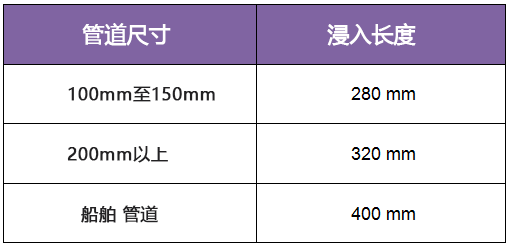
 Thermowell General Specification
Thermowell General Specification
Here, we will see the detailed specifications of the thermowell.
Each temperature element shall be equipped with a thermal sleeve, which shall be machined from a bar stock with a length of not more than 600 mm, and at least SS 316 material shall be used.
Thermowells shall be designed according to standard drawings with flange types up to 600 # ANSI.
Above 600 #, contractors can use their proven designs for specific applications
Flange material SS 316 minimum
In corrosive and abrasive service, use stationary thermowells.
There should be no air gap between the bulb and the thermocouple temperature sensor bushing to ensure fast response.
The inner diameter shall be suitable for the temperature element.
In very high voltage applications, welded thermowells are used.
The inner diameter of the finished thermal sleeve shall be concentric with all other diameters with a tolerance of 0.2 mm.
The thermal sleeve shall be machined and rifle drilled after welding and heat treatment to achieve a smooth surface. The surface finish of the valve stem shall be 10-15u inches (0.254-0.381 microns).
Combined thermowells shall be used for low pressure and low speed services, such as flame heaters, and where the immersion length of thermowells is required to be greater than 600 mm. In all these cases, 100% radiographic testing shall be performed on all welded joints. Dye penetrant testing may be performed on joints that cannot be radiographed. Orifice dimensions and machining tolerances shall comply with BS 1042 Part 1.
The resonance effect of the thermowell shall be evaluated. If the thermal sleeve is installed in a pipeline subject to high fluid velocity (liquid exceeding 6 m/s, steam/gas exceeding 120 m/s), the combined stress and frequency shall be calculated using a proven method. If the thermal sleeve design fails to pass the vibration analysis, the Contractor may use an alternative design. All these designs and calculations shall be submitted to the Buyer for review.
The immersion length "U" of the thermowell shall be as follows:

The immersion length is based on a length of 200 mm between the flange face and the inner wall of the pipe. In special applications where the size of the thermowell nozzle is large or the temperature needs to be measured at any particular location, the Contractor shall determine the immersion length according to actual requirements.
Any pipe less than 4 "nominal bore shall be blown to 4" size to install the thermal sleeve.
The heat sleeve with rubber coated extension is used for piping systems and containers, where it is insulated. The length of the adhesive coating is determined by the thickness of the insulating layer. In addition to the 63.5 mm (2.5 inch) thermal sleeve, the standard rubber coating is extended to 89 mm (3 inches), including 60 mm (2 inches). Other rubber coated extensions can be provided with multiples of 89mm (3 ") as required to provide the insertion length of standard instruments.
Thermowells provide four main process connection methods:
● Threaded type
● Flange type
● Welding type
● Clamp type
Threaded thermowells are the most commonly used because of their low cost and ease of installation.
Threaded thermowells are not recommended for pressures above 70 bar (1000 psi).
Standard thread sizes are 3/4 "and 1" NPT.
Flange type thermowells shall be used when the pipe specifications meet the requirements. Flange execution and high pressure are required. The thermowell is equipped with flanges in accordance with B 16.5, with raised face or ring type joints, and has a pressure rating of 150 – 2500 pounds.
Flanged thermowells can have flanges welded to the shank (stem), or the flange and shank can be forged into an integral unit for use in harsh service conditions.
Flange sizes are: 1 ", 1 1/2" and 2 ".
Welding in thermowells is used for extreme pressure and temperature conditions and when ASME code requires welding connections.
The welded in thermowell is a low-cost product, but the disadvantage is that the thermowell cannot be disassembled for inspection or replacement.
Standard weld sizes are 38 mm (1 1/2 inch), 26.9 mm (3/4 inch nominal pipe size), or 33.4 mm (1 inch nominal pipe size).

